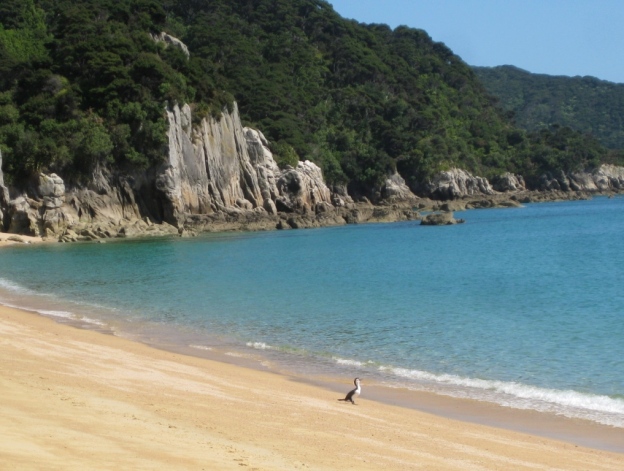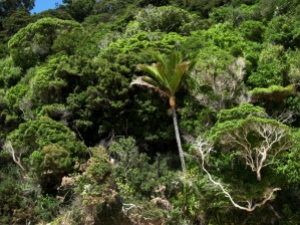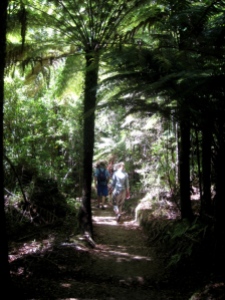Sunday- Rarangi Beach
Monday-Blenheim Wineries and Gardens
Tuesday-Totaranui and Abel Tasman Nat’l Park
Wednesday-Birds of Abel Tasman
Thursday- Nelson, New Zealand
Friday- Picton and the Marlborough Sounds
Saturday-The Plants of New Zealand
Totaranui Forest Natives
Totaranui is a dreamy beach area, golden sand and clear water, located in Abel Tasman National Park. Abel Tasman was the man who discovered New Zealand.
Our visit of a few days here allowed my sister and I to see a lot of the forest native plants by tramping (walking the trails) along the paths leading to other beaches.
We also saw and heard many exotic birds which you will see, too! We always got back in time for nibbles and tea.
This is what we saw:
The Silver Fern, Cyathea dealbata, is the symbol of New Zealand, and here in the forests of Totaranui, they form a middle layer between the smaller shrubs and the tallest native beech tree. Every form of them is lovely from fiddlenecks to their dried fronds. They towered over the paths, filtering the bright sunshine.
Spiky Cabbage Trees, Cordyline australis, poke up above the landscape and halfway up their single trunks split into many. The berries of Cabbage Trees are enjoyed by bellbirds, tūī and New Zealand wood pigeons.
A small tree, an Entelea arborescens or whau was planted by the homestead at Totaranui where we stayed, just past full bloom. The dry fruit pods turn brown and are covered with spines. The common name whau is a Māori name from the Polynesian word for hibiscus, however to me, the flowers resemble white clematis. The wood is very light weight, which gives it another name, corkwood.
This Metrosideros perforata, climbing rata or akatea, is one of several Metrosideros species native to New Zealand, which also includes the common to California, NZ Christmas Tree or M. excelsa. This little gem was found growing outside the homestead door.
On a walk to Awaroa Lodge, reached by crossing a river inlet to the sea at low tide, we saw a Nikau palm, the only palm species native to mainland New Zealand. The trunk grows up into a smooth green collar before spiking out into fronds…a very handsome palm.
At low tide, we still walked through a three foot high river and on each side crunch-crunched our way over millions of tiny green clam shell, already raided by the oyster catchers.
This fern, identified by someone for me on the Dave’s garden Plant ID Forum is upright and glowing in a sunbeam deep in the temperate rainforest. NZ Crown Fern or Piu piu, Blechnum discolor, an attractive fern, with an upright habit, is native and found throughout NZ. Temperate rain forests only occur in few regions around the world, including most of NZ and the Olympic Peninsula of Washington State. That makes two of my relatives who live near these fascinatingly rare areas!
Hēbē is the goddess of youth in Greek mythology, a young Taiwanese television star and a huge genus of flowering plants, from tiny ‘head of a pin’ leafed, coastal plants to tropical beauties like this one, Hebe speciosa, four feet high in front of the ranger station at Totaranui. How I would love to plant a few, but no, my climate is too hot and dry in summer.
For info on hebes and NZ plants: Hebe Society in the UK.
Tomorrow – Wednesday – Birds of Abel Tasman
















8 comments